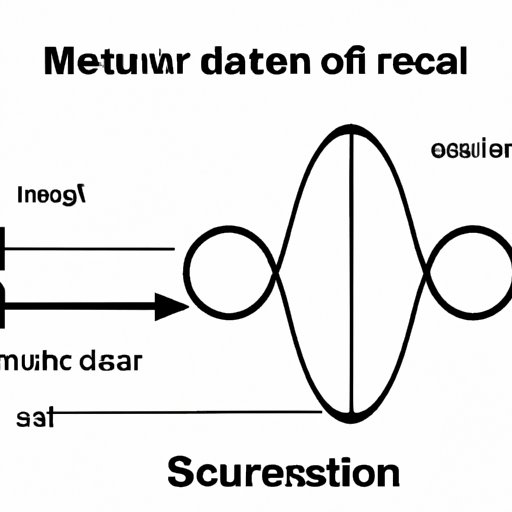Introduction
Sound is a mechanical vibration that propagates through a medium, such as air or water, as a wave of pressure and displacement. The simplest definition of sound is something that can be heard, but it is much more than just a noise. To understand sound, we must first look at the physics of sound and why a medium is required for sound to travel.

Exploring Different Types of Media for Sound Propagation
When we talk about sound, the three most common media are air, water, and solid objects. Air is composed of molecules that vibrate when sound waves pass through them. Water is composed of molecules that are denser than those found in air, so sound waves move faster through water than air. Solid objects, such as walls, are made up of molecules that are even denser than those found in water, so sound waves move even faster through solids.
Properties of Sound Waves and Interactions with Media
Sound waves are characterized by three main properties: frequency, amplitude, and wavelength. Frequency is the number of vibrations per second, measured in Hertz (Hz). Amplitude is the intensity of the sound, measured in decibels (dB). Wavelength is the distance between two successive peaks or troughs in a sound wave, measured in meters.
The interactions between sound waves and the media they propagate through can be divided into three categories: reflection, refraction, and diffraction. When sound waves encounter a surface, some of the energy is reflected back and some is transmitted through the surface. Refraction occurs when the sound waves change direction as they pass through different media, such as air and water. Diffraction occurs when sound waves bend around obstacles or spread out after passing through an opening.

Differences Between Sound Transmission in Air and Water
The two most common media for sound transmission are air and water. There are several differences between the two that affect how sound travels. The most notable difference is the speed at which the sound travels. In general, sound travels faster in water than in air. This is because the molecules in water are much more densely packed than those in air, allowing the sound waves to transfer energy more efficiently.
The other major difference between air and water is their ability to compress and rarefy. In air, sound waves cause the molecules to compress and rarefy, creating variations in air pressure. This is what causes sound to be audible. In water, however, the molecules are too dense for this to occur, so sound is not audible but can still be detected using specialized instruments.
How Sound is Affected by Its Medium
The characteristics of the medium through which sound travels can have a significant effect on how it is perceived. Temperature affects the speed of sound, while pressure affects its amplitude. For example, sound waves travel faster in warm air than in cold air, and they travel faster in high-pressure air than in low-pressure air.
Sound can also be affected by the physical properties of the medium. For instance, sound waves travel faster in liquids than in gases because the molecules in liquids are closer together. They also travel faster in solids than in liquids because the molecules in solids are even closer together.

Comparing the Speed of Sound in Various Media
The speed of sound in different media can vary significantly. In air, sound travels at approximately 331 m/s (1,084 ft/s) at sea level and 15°C (59°F). In water, sound travels at approximately 1,484 m/s (4,879 ft/s), and in solids, it can travel at speeds of up to 5,120 m/s (16,800 ft/s).
The speed of sound is also affected by the density of the medium. For example, sound travels faster in helium than in air because helium is less dense. Similarly, sound travels faster in iron than in aluminum because iron is denser than aluminum.
Conclusion
In conclusion, sound does need a medium to travel, and this medium affects the speed and direction of sound waves. Air, water, and solids are the most common media for sound transmission, each of which has its own unique properties. The speed of sound varies significantly depending on the medium, with air being the slowest and solids being the fastest. Finally, the characteristics of the medium, such as temperature and pressure, can also affect the speed and amplitude of sound waves.
These findings have important implications for future research. For example, understanding the medium through which sound travels can help researchers better predict how sound will behave in various environments. Furthermore, exploring the effects of different mediums on sound could lead to new ways of transmitting sound and manipulating it in interesting ways.
(Note: Is this article not meeting your expectations? Do you have knowledge or insights to share? Unlock new opportunities and expand your reach by joining our authors team. Click Registration to join us and share your expertise with our readers.)
